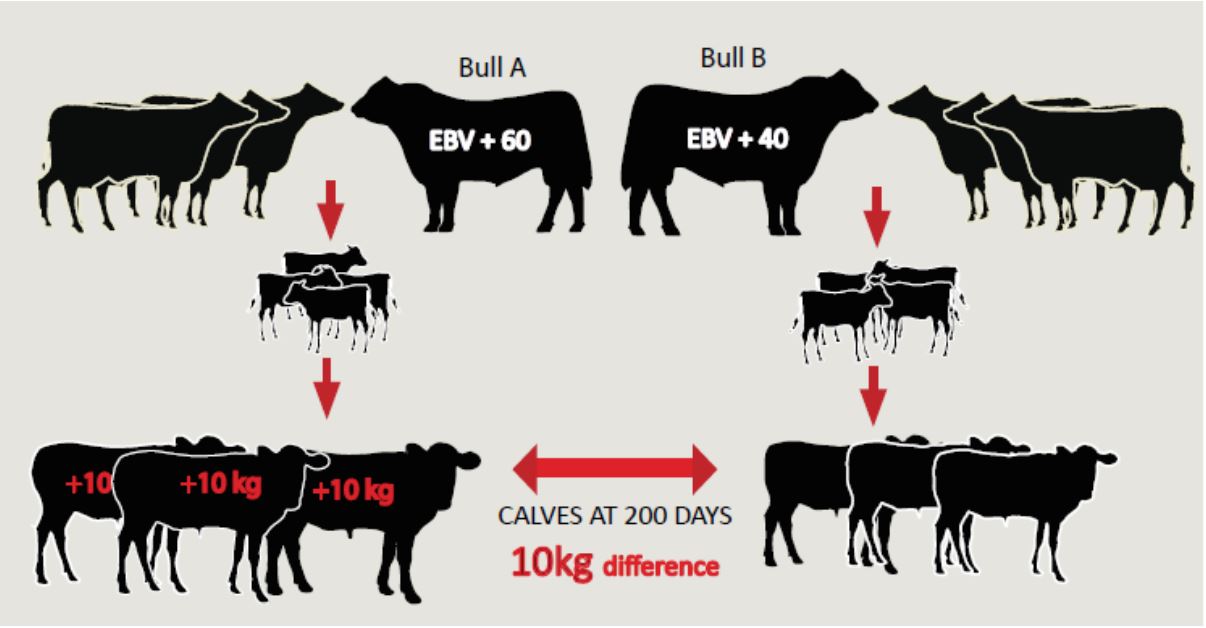Using EBVs to Compare the Genetics of Two Animals
TACE EBVs can be used to estimate the expected difference in the genetics of two animals, with the expected difference equating to half the difference in the EBVs of the animals, all other things being equal (e.g. they are joined to the same animal/s).
For example, a bull with an IMF EBV of +3.0 would be expected to produce progeny with on average, 1% more intramuscular fat in a 400 kg carcass than a bull with a IMF EBV of +1.0 (i.e. 2% difference between the sire’s EBVs, then halved as the sire only contributes half the genetics).
Importantly, TACE EBVs can only be used to estimate the difference in the genetics of two animals who both have TACE EBVs. TACE EBVs are not directly comparable with EBVs calculated in other genetic evaluations.
Example: Expected Difference in Progeny Performance
All other things being equal, a bull with a 200 Day Growth EBV of +60 would be expected to produce progeny that are, on average, 10 kg heavier at 200 days of age than a bull with a 200 Day Growth EBV of +40 (i.e. 20 kg difference between the sires’ EBVs, then halved as the sire only contributes half the genetics).








